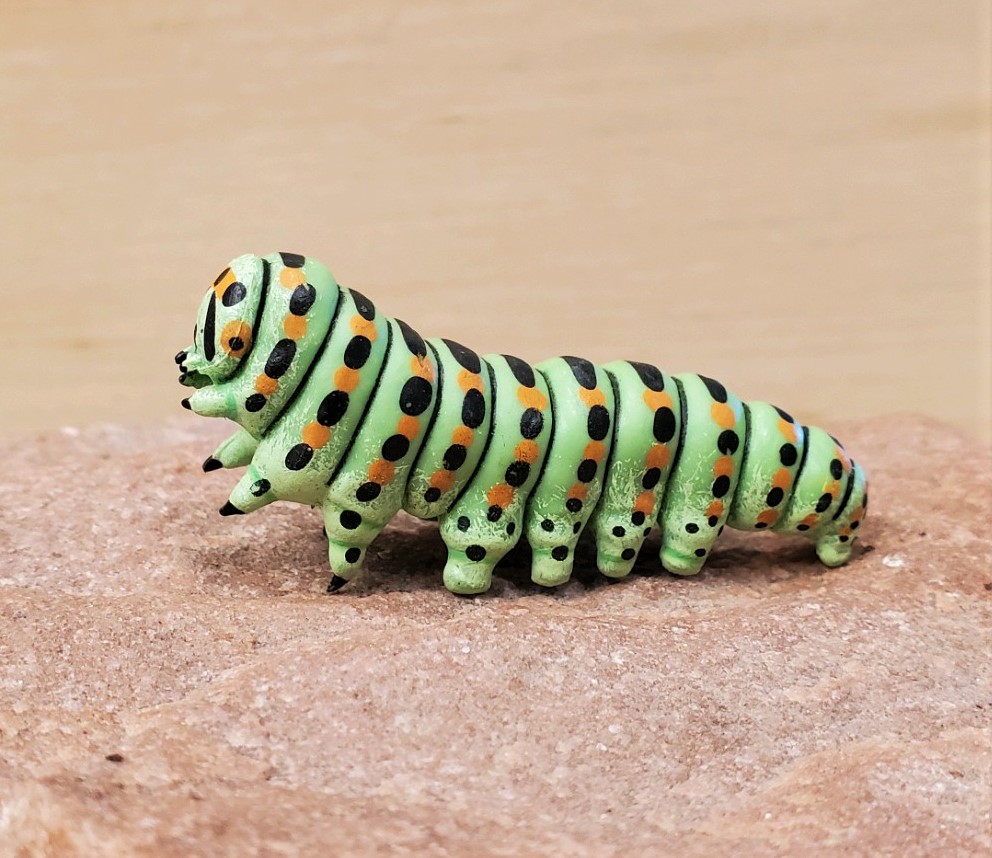While commonly referred to as the ‘Old World swallowtail’, Papilio machaon has a very wide distribution, widest of any of the Papilionidae, covering most of the Palearctic and into western North America. Part of the species’ success is its tolerance for a variety of habitats and host plants. The butterfly can be found in forests, grasslands, hilltops, Alpine meadows, tundra, wetlands, disturbed areas, parks, and gardens. Host plants include those in the families Apiaceae (umbellifers), Asteraceae (composites), and Rutaceae (rues). Interestingly, butterflies in Europe and Asia tend to use umbellifers more commonly as host plants while American populations use composites. Papilio machaon has only been IUCN-evaluated for Europe. And although it is classified as Least Concern there, it is generally considered rare throughout its range. It is protected by law in Austria, Czech Republic, Slovakia, Hungary, Romania, United Kingdom, and Moldovia. In South Korea it is listed as ‘vulnerable’ in their Red Data Book, and one subspecies is protected in India. In 2021, Papo introduced to not just the adult P. machaon, but also its caterpillar. These two figures were produced in the same year, but are sold separately. However, I felt it would be fun to look at them together! I’ve had the caterpillar for several months now, but it took a while to obtain the adult as it was one of Papo’s last 2021 releases. Previously, adults had been made by Bullyland and Insect Lore, as well as an acrylic ‘mascot’ figure by Ikimon. Kaiyodo, Shine-G, and Toys Spirits have made larvae. AAA made a complete life cycle of the species!

First, let’s look at the adult. The figure is sculpted with its wings partially-open. If spread like a specimen, the wingspan would come to 6.5 cm for a scale of 1:1-1:1.2 (1:1 for a small specimen). The paint job is for the most part very well done. In terms of color and accuracy, it is very good. However, if you look carefully, while the left forewing is painted properly, the right forewing has the printing shifted a little to the left, leaving a pale edge on the wing. This tells me that the paint was probably applied via a printer rather than hand-painted. Interestingly, this is not that bad compared to others I have seen. A collector on the STS forum showed pics of his figure after he received it and his pale band is noticeably wider than mine! Another thing I appreciate about the paint is that Papo made the effort to make the ventral side of the wings to look like the ventral side of the wings of the actual animal. In many cases, companies will either paint the ventral surface the same as the dorsal surface, or leave it monochrome.




Next, let’s look at the larva. The caterpillar measures 4.7 cm, which does put it in the 1:1 range, albeit on the small end for a mature larva. The sculpt is spectacular, even for such a simple morphology. The number of legs and prolegs are correct and of an appropriate thickness (even the claws on the true legs are discernible). The paint is also very well done, and easily recognizable for this species.




Overall, these two figures offer a great way to add this species to one’s collection. In addition to being readily available due to their recent release, they also represent a couple of the best representatives of their species in toy form. The Kaiyodo larva is very good, of course, but this Papo larva could easily rival it, and none of the aforementioned adults are as nice as this one by Papo. In recent years, Papo has led the charge on insect figures outside of Japan, and today’s P. machaon pair show why they have the opportunity to be very successful with them!

Disclaimer: links to Ebay and Amazon on the AnimalToyBlog are affiliate links, so we make a small commission if you use them. Thanks for supporting us!



